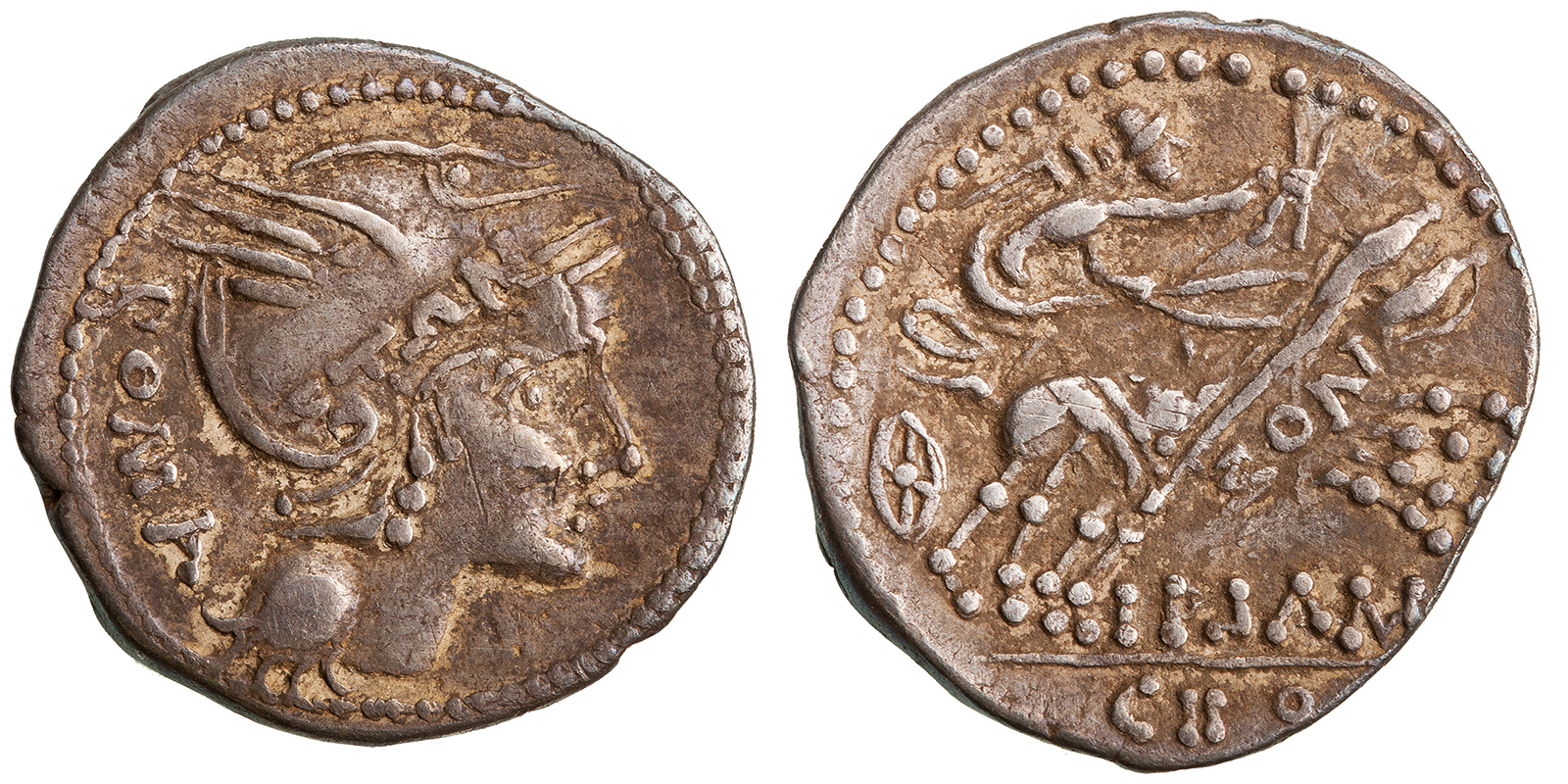109 BCE - 50 BCEROMA behind | IPLΛM[...] (L retrograde) below, CIIO in exergue
Overstriking coin
Rome_over_Apollonia_New_York, _ANS.jpg
[1]
Overstruck variety
Apollonia_under_Rome.jpg
Description
| ObverseInscription or printing placed on the obverse.:
|
ROMA behind (Latin) Helmeted head of Roma right
|
ReverseInscription or printing placed on the reverse.:
|
IPLΛM[...] (L retrograde) below, CIIO in exergue (Latin) Victory driving biga right
|
Mint and issuing power
| MintIdentifies the place of manufacture or issue of a numismatic object.:
|
Dacia (uncertain Roman mint)
|
Ancient regionAncient region.
|
Dacia
|
Modern countryModern country: Romania
|
AuthorityIdentifies the issuing power. The authority can be "pretended" when the name or the portrait of X is on the coin but he/she was not the issuing power. It can also be "uncertain" when there is no mention of X on the coin but he/she was the issuing power according to the historical sources:
|
Roman Republic
|
Chronology
| FromIdentifies the initial date in a range assigned in a numismatic context. 109 BCE toIdentifies the final date in a range assigned in a numismatic context.. 50 BCE
|
Hellenistic 323-30 BC  periodTime period of the numismatic object. periodTime period of the numismatic object.
|
Physical description
MetalThe physical material (usually metal) from which an object is made.: Silver 
|
WeightWeight of the numismatic object (in grams). in grams: 2.942.94 g <br />2,940 mg <br />
|
DenominationTerm indicating the value of a numismatic object. Examples: tetradrachm, chalkous, denarius.: denarius 
|
AxisDescribes the directional relationship between the obverse and reverse of a numismatic object.: 88 mm <br />0.8 cm <br />
|
| DiameterDescribes diameter of an object (in mm).: 2020 mm <br />2 cm <br />
|
StandardStandard.: Roman
|
References
Description
| ObverseInscription or printing placed on the obverse.:
|
Cow suckling calf left.
|
ReverseInscription or printing placed on the reverse.:
|
Double stellate pattern within double linear square with sides curved inwards
|
Mint and issuing power
Chronology
| FromIdentifies the initial date in a range assigned in a numismatic context. 200 BCE toIdentifies the final date in a range assigned in a numismatic context.. 150 BCE
|
Hellenistic 323-30 BC  periodTime period of the numismatic object. periodTime period of the numismatic object.
|
Physical description
| DenominationTerm indicating the value of a numismatic object. Examples: tetradrachm, chalkous, denarius. ᵖ:
|
drachma 
|
|
|
References


